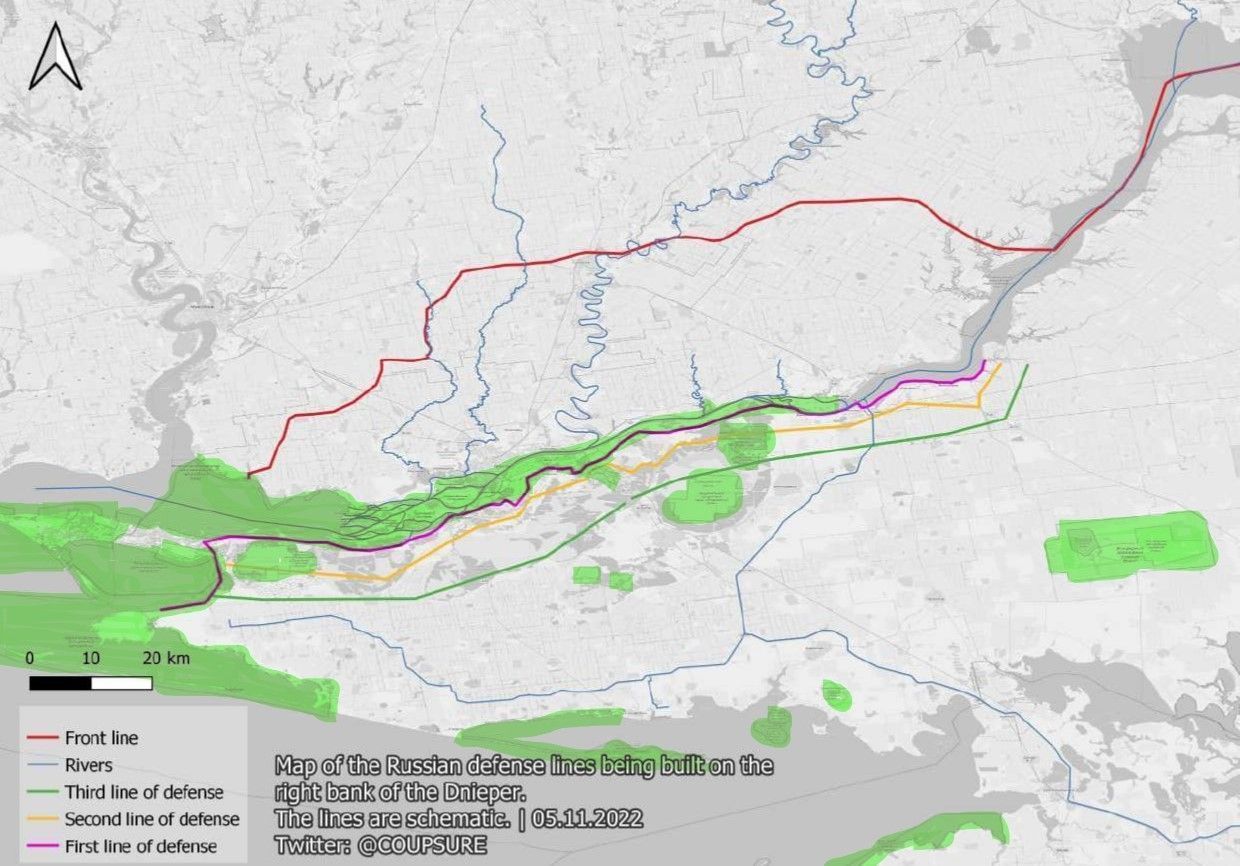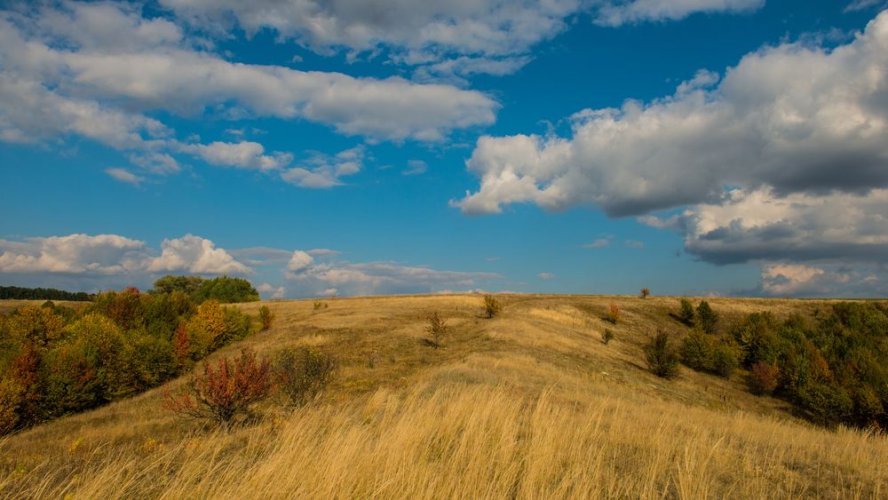Russian troops began construction of a "line of defense" on the left bank of the Kherson region, where a number of nature reserves, natural monuments, and unique ecosystems are located, including psamophyte (sand) steppes.
Digging trenches, possible artillery shelling, felling of rare trees for firewood and fortifications can destroy the nature of Kherson region, reports the Ukrainian Environmental Protection Group on Facebook.
Eco-activists emphasized that the construction of fortifications will pass through the extremely valuable territories of the Black Sea Biosphere Reserve, as well as through:
- national parks Oleshkivski piski and Nizhnyodniprovskii;
- Saga landscape reserve,
- forest reserve Berezovy Kolky,
- general zoological reserve Korsunskyi;
- botanical reserves Shaby and Khrestova Saga,
- protected tracts Malokakhovskyi Bir, Oleshkivskyi (Tsyrupynskyi) Pine Bir, Holoprystanskyi Acacia Forest, Starozbur'ivskyi Acacia Forest;
- natural monuments Krynkiv settlement of beavers, Vikovi sycamores, Woody white acacia, as well as natural oaks declared natural monuments, which are the remains of the historical Gilea in SE Zburivske LMG.
They also emphasized that such fortifications will affect a large number of extremely valuable natural areas designed for bequest.

The message emphasized that populations of more than a hundred species subject to international, national and regional protection, plant groups included in the Green Book of Ukraine, habitats of resolution 4 of the Berne Convention continue to be destroyed due to the construction of fortifications. Serious damage was caused to groups of psammophytic (sandy) steppes, unique birch, oak and aspen stilt forests, floodplain and relict floodplain alder forests, real and saline meadows, natural swamps and lakes, etc.
Ecoactivists emphasized that such actions pose a particular danger to the psammophyte steppe. These unique areas are a place of concentration of many rare species of animals and plants. Some of them are endemic (such as are not found anywhere else). In addition, deep trenches will become death traps for terrestrial animals
The report emphasized that the construction of trenches, DOTs and other structures destroys the natural vegetation and very quickly destroys the humus layer, which leads to the scattering of sand. This will also be facilitated by the huge amount of heavy machinery that will be moving.
"Considerable damage will be caused to the natural forest vegetation – the remains of the historical Gilea. There is a massive felling of trees to strengthen positions and heating. Virtually all natural tree species here are rare and subject to protection," ecoactivists said.
They also emphasized that digging trenches can lower the groundwater level, which will negatively affect the vulnerable natural ecosystems of the kolko forests, sagos and virgin areas of the sandy steppes of this territory. After all, the level of the earth's surface above the sea is so low that it is regularly flooded by encroaching sea waters.
"The trenches will probably be easily flooded by the first surge of the sea. However, this will also contribute to the erosion of the local shore. Moreover, at a depth of at least 1-1.5 meters, the natural water level is already waiting for the occupiers," said UPG eco-activists.
They emphasized that numerous artillery and air strikes will create a "moonscape" in the middle of the protected steppes. Animals and plants will die from explosions and fires.
"The natural steppe vegetation of protected tracts and unique birch-oak and alder forests will be destroyed, and monoculture pine plantations will serve as "fuel" for the spread of fires," they believe.
Eco-activists also expressed hope that thanks to the talented decisions of Ukrainian military strategists, the liberation of southern Ukraine will take place without significant damage to the territory.
As EcoPolitic reported before, eco-inspectors calculated 15.63 billion hryvnias of damage to atmospheric air due to fires on the territory of the Kinburn Peninsula, located within the Kherson and Mykolaiv regions.





